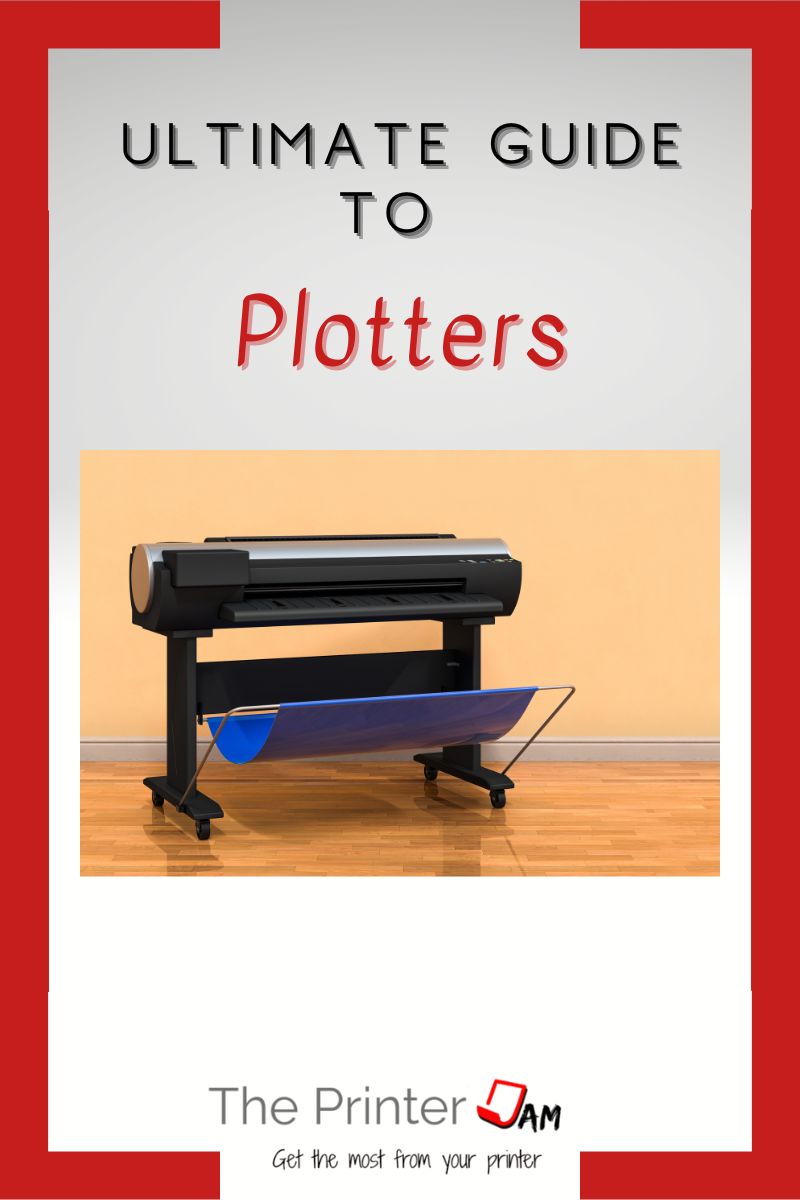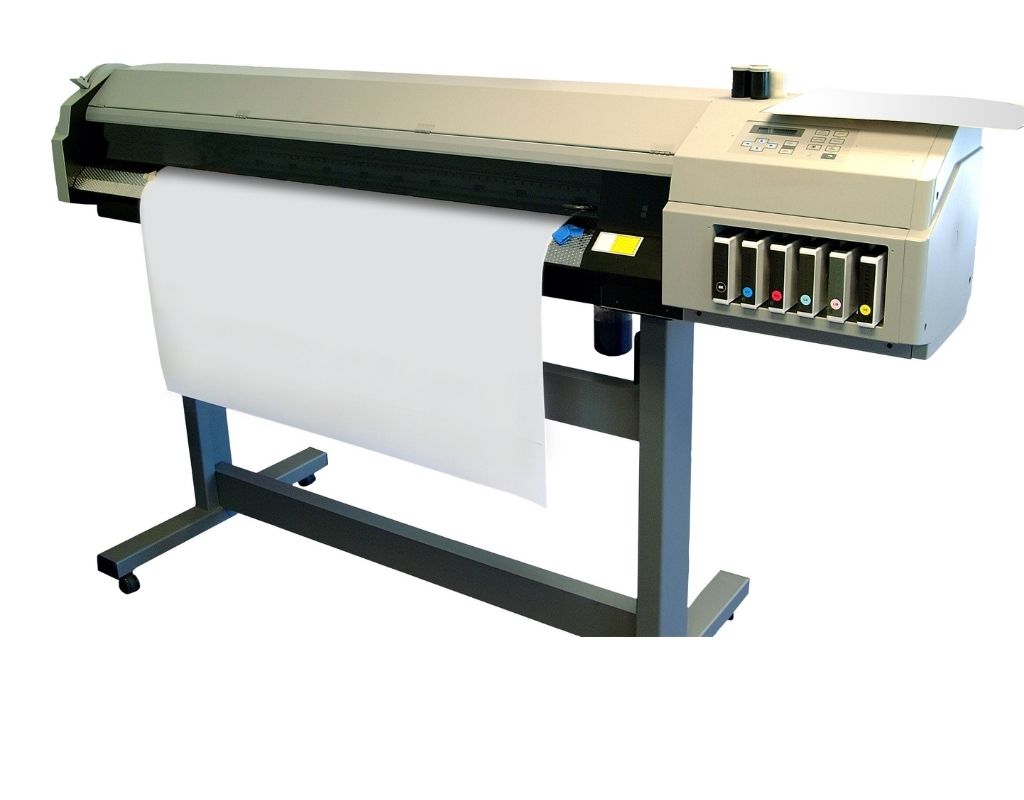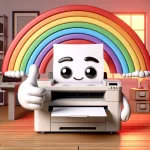The term plotter was popularized from the original pen plotters. A pen is placed in a carriage unit which is then moved along the horizontal and vertical axis with motors. By plotting points along a X and Y axis a drawing was achieved. Much like an Etch-A-Sketch.
Early plotters were used for engineering drawings, topographic maps, line drawings, and larger charts. The vernacular stuck. Now plotter means a machine used for wide format printing or cutting.
The original pen plotters were the only game in town for printing on larger paper. Inkjet printers or laser printers had not been invented. If you wanted larger prints you would have to wait since they were hand drawn. Printing presses of the time were for mass production and not short runs of large paper.
Computer aided design (CAD) replaced hand drawn maps, charts, diagrams, and architectural blueprints. It also created a demand for printing on larger paper. Output devices such as plotter printers emerged from that demand.
As technology improved modern printing methods outpaced pen type plotters. Inkjet and laser processes are more popular than pet plotters now. Technically, your average inkjet and laser printer plots an image along an X and Y axis. Yet the term plotter is reserved for large format printers.
Modern Plotters
Modern plotters are capable of terrific print quality, high resolution, and can work with a variety of materials. Graphic plotters make most of the signage, posters, and displays you see.
A plotting machine isn’t only for printing. You can cut shapes with other plotters. Instead of a print head or laser light, a sharp blade is moved along the X and Y axis.
A cutting plotter can be large enough for vinyl posters or small enough for stickers. Function rather than size defines them. You can work with many different sizes and materials with these plotters.
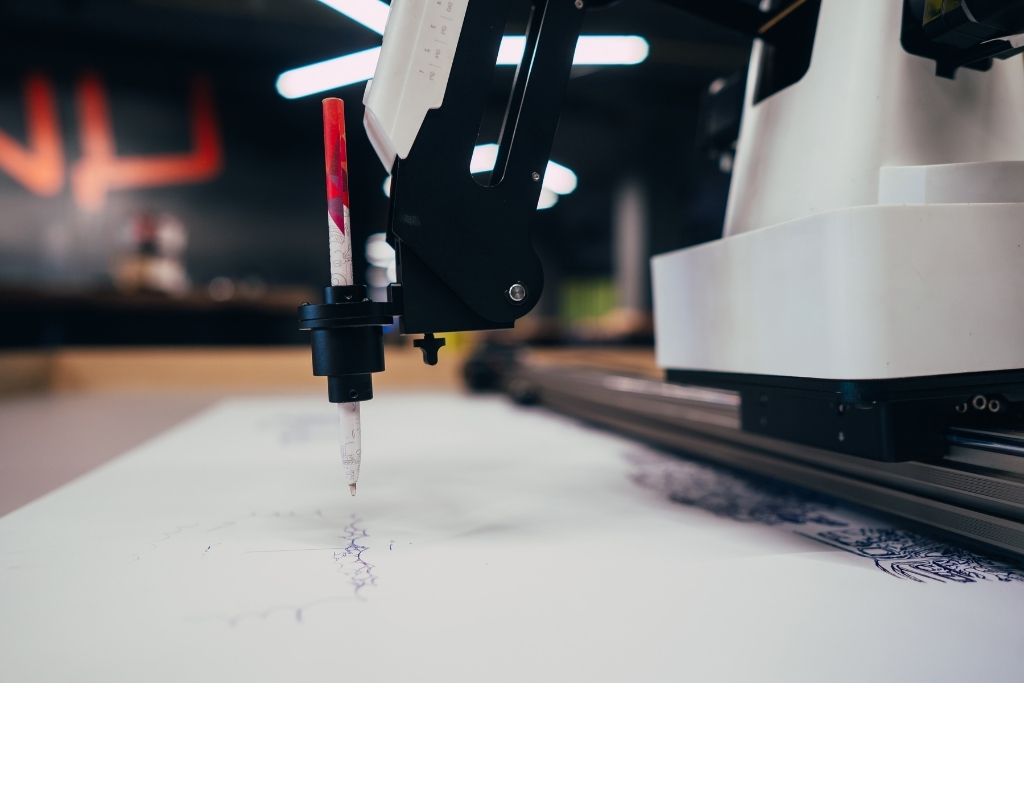
What is a Plotter Used For?
If you want to accurately print vector graphics, plotters will have the best results. They print vector images on a nano or large format scale. Although you won’t find many plotting devices for “Fabrication of Multi-Color Sub-Cellular Scale Microarrays”.
Most plotters print raster graphics on paper. You can also print on vinyl, wood panels, aluminum plates, and a assortment of poster boards. Plotters produce most of the engineering drawings, architectural drawings, maps, posters, and signs you see.
HP, Canon, and Epson make large-format printers for engineering projects as well as advertising agencies. Kip, Ricoh, and Kyocera make large-format printers for engineering purposes that use a laser printer process.
If you print large technical drawings scale and ratios are crucial. You will need an engineering plotter. These are great for blueprints, diagrams, and maps. A plotter produces accurate scale and ratios from your original design.
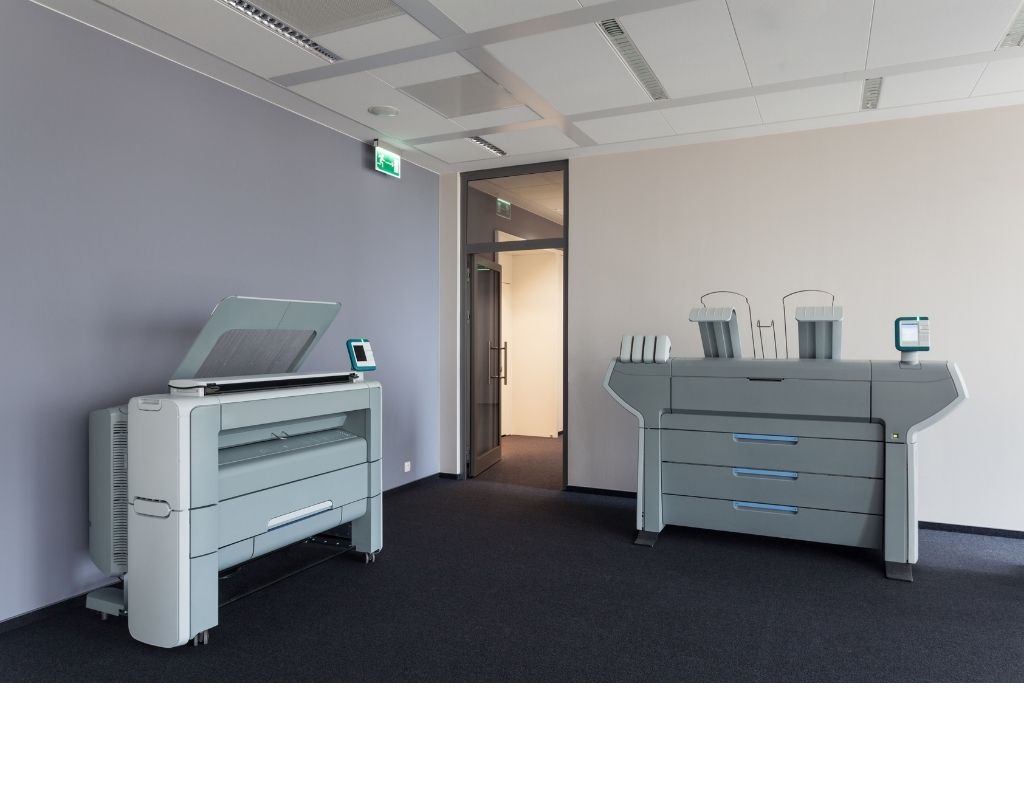
Materials Plotter Can Use
Another thing you can use a plotter for is printing signs and posters. Design plotters from HP, Canon, and Roland DGA have terrific print quality. You can create images on a array of materials, including:
- Vinyl
- PVC board
- Wood panels
- Aluminum plates
- Corrugated cardboard
- Glass
- Canvas
- Acrylic
- PETG
- Foam boards
Some materials are too big and bulky to feed through a plotter. You will need a flatbed plotter for larger media. A flatbed plotter moves the printhead along both axis while the material remains stationary. They are used to print on a wide variety of flat materials.
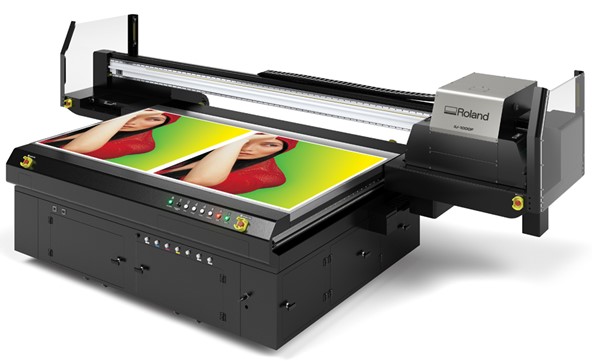
Recently pen plotters have seen some resurgence with Cricut machines. They function as both pen plotters and cutting plotters. You can use both a cutting tool or pen is the carriage unit.
If you need a smaller format for crafts you will find many uses for a Cricut machine. You can use them for cutting, embossing, or printing simple single color designs.
What is a Cutting Plotter Used For?
If you need to cut contours on media a cutting plotter will suit your purposes well. A cutting plotter is a device for cutting contours on a substrate. Substrates include: vinyl, paper, plastic, cardstock, PVC film, polyester film, thin wood, fabric, and engineering film.
You can use these plotters for vinyl signage, decals, stickers, and heat transfer materials.
If you want to make vinyl stickers or signs you have to use standard sizes of media. Then you can use a cutting plotter to trim the excess paper around your design.
Vinyl cutters trim around the image, which makes your design stand out more on t-shirts, signs, stickers, and decals.
The decals on cars and designs on t-shirts you see are common uses of vinyl cutters. Any signage, design, or lettering you see with custom shapes were done with a cutting plotter.
You can also use cutting plotters to mark or emboss the material depending on its downforce. If you want to do engraving or lettering you can adjust your cutting plotters downforce. You can use a different tool in the carriage unit to emboss the material instead of cutting it too.
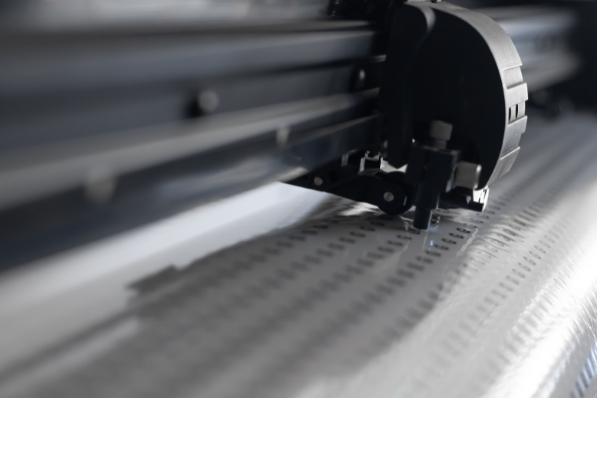
Many cutting plotters have a variety of tools and dual purposes.
Cutting plotters use software to map out the contours you need cut. Ones with sensors use registration marks on the media to orientate the cutter. Others use a mat. You need to orientate the media on the mat for it to cut correctly.
Types of Plotters
As you can see plotting machines come in a many different shapes and sizes. Their use of an X and Y axis define them more than size or printing vector graphics. The main types of plotters fall into two categories:
- Printing
- Cutting
Any plotter will employ one of these functions. Or sometimes you can find plotters that can do both functions, such as a Cricut machine.
You can further classify printing plotters by style. The styles of printing plotters are:
- Engineering
- Graphic/design
- Flatbed plotter
- Pen plotter
- Drum plotter
Engineering Plotters
Your basic engineering type plotters focus on line quality and scale. They can be monochrome or color. You will find they use the same process as any inkjet or laser printer. Although a laser can’t be used in such large printers. When they use toner and a LED they are considered electrostatic plotters.
Standard paper sizes include 24, 30, 36, 42, 44 inches. Though 24 and 36 inch are most common.
Design Plotters
Graphic or design type plotters focus on quality. You will find these are only inkjet plotters which tend to have different colors and kinds of ink. These plotters use UV, neon, or sublimation ink. They also print on larger sizes (44-64 inches) and use more media types than engineering plotters.
Flatbed Plotters
Flatbed type plotters focus on media types. These type use the larges sizes (98 inches) and different media types. You will find they use an inkjet technology and have excellent print quality. They also use more colors and different ink (UV) than engineering plotters.
Flatbed plotters differ from other type plotters in the substrates they use. For example, flatbed plotters can print on a flat surface such as glass or wood panels.
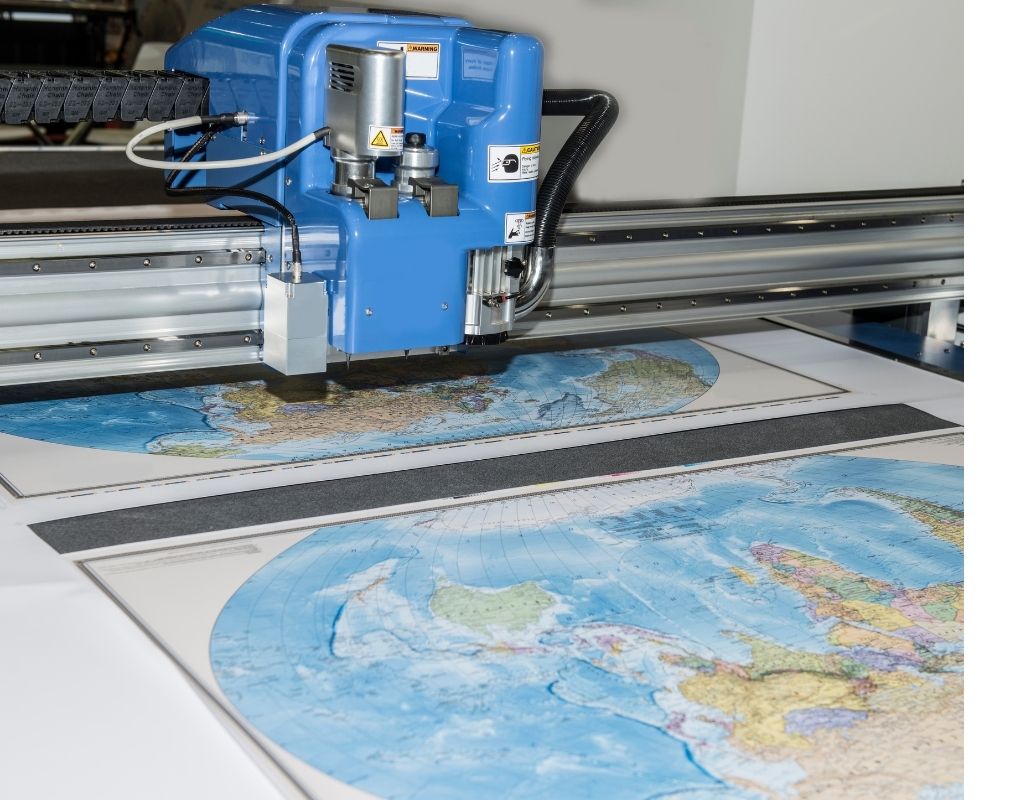
Pen Plotters
Pen plotters literally use a pen to draw continuous lines on paper. The pen is mounted in the carriage unit which can move on both the X and Y axis.
Drum Plotters
Drum plotters are similar to pen plotters except the carriage unit only moves side to side on one axis. Paper wraps around a cylindrical drum which rotates to achieve the second axis of movement.
Other Plotters
Technically, a 3D printers a type of plotter. They just add a third axis (Z axis) instead of two. Even though a traditional printer and a 3D printer plot points along axis to accomplish their task, neither are typically referred to as a plotter.
Summary
You can see plotters available today have improved and diversified since their implementation in the 1950s. They are capable of much more than technical diagrams, CAD drawings and topographical maps.
Many of the signs you see on cars, billboards, and in stores are made with plotters. They are also responsible for many of the large vector designs you see on t-shirts, sportswear, banners, and posters.
Plotters range from personal to industrial use. If you want to do crafts or start a business there are many plotters which will suit your needs.
FAQ
Standard wide format paper sizes are 24, 30, 36, 42, 44, and 64 inches. For engineering 24 and 36 inch are the most common. The larger sizes are generally used for graphic designs, such as signs or posters.
A scanner is for imputing images into a computer. While a plotter outputs images from a computer.
Wide-format printers are a type of plotter. Plotter is a broader term which can refer to several types of devices.
The optical eye is a sensor to detect registration points on the vinyl substrate. It then uses those points as reference to cut out a design. Useful for stickers or signage. Large or small.
A term to describe any material being acted upon inside a plotter. AKA physical medium or media type.
Remington Rand invented a plotter in 1953.

The Copier Guy, aka Dave. I’ve worked on scanners, printers, copiers, and faxes since 1994. When I’m not fixing them I’m writing about them. Although, I’m probably better at fixing them. I’ve worked with every major brand. As well as several types of processes. If it uses paper I’ve probably worked on one.
